Bay Laurel Has Yellow Leaves: Why Is My Bay Laurel Turning Yellow
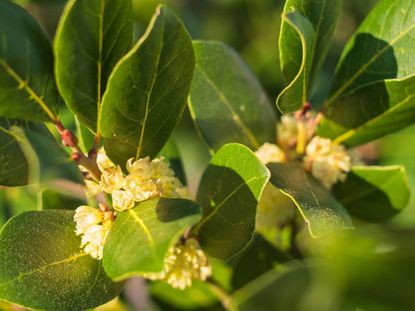
Bay leaves are a well-loved seasoning. If you are growing a bay laurel tree, you know how great it is to have the fresh leaves on hand, especially if you love to cook. What if your bay laurel has yellow leaves though? You’ll want to read on. There may be some things you need to know about their growing conditions.
Reasons for a Yellow Bay Laurel Plant
Bay Laurel is native to the Mediterranean region. A sweet bay leaf tree (Laurus nobilis) can grow 40 to 50 feet (12 to 15 m.) and is considered one of the oldest cultivated species of trees. If you’re noticing any yellow leaves on bay laurel plants that you may be growing, here are the most common causes.
Soil conditions
Bay laurel trees demand well-draining soil. If their roots get waterlogged, they will easily develop root rot, which can turn the leaves yellow and cause the plant to become droopy. If you think your bay laurel has been overwatered, you may be able to save it. Transplant or repot the tree, trimming away any diseased roots, and remove all the affected parts of the plant. Replant it in fresh, well-draining soil and water only when the top layer of soil is dry. Wet roots are often the underlying cause of a yellow bay laurel plant.
Pests
If your bay laurel has yellow leaves, it could mean it’s being visited by an insect called a bay sucker. Bay suckers are tiny brown bugs that resemble aphids. They feast on the tree’s sap in late spring months and lay their eggs on the undersides of the leaves. The eggs hatch into white, fuzzy looking larvae. If the tree isn’t treated, the leaves will become thick, turn brown, and fall off. If you see the leaves on your bay laurel turning yellow, check the undersides of the leaves. If you see signs of bay suckers or their eggs, treat the plant’s leaves and stems immediately with insecticidal soap and check occasionally to be sure you got them all. All infected leaves and stems should be removed and completely disposed of.
Nutrition
Yellowing bay leaves can be a sign of a nutrient deficiency. Iron chlorosis can develop when your soil is too alkaline or if there is root damage. With this problem, you may see your bay leaves begin to turn yellow at the edges first, while the veins remain green. You can correct the pH with sulfur or peat moss. Again, be sure the tree has good drainage. A lack of nitrogen can also create a pH imbalance. Low nitrogen will bring on a uniform yellowing of your bay laurel’s leaves, beginning with the older lower leaves and moving up the tree. You can fix this by feeding it with some good organic compost or with a dose of nitrogen-rich fertilizer. Be sure to follow directions when using fertilizer.
Random Yellowing
The good news is that bay laurel leaves sometimes turn yellow simply due to the age of the plant. Bay laurels are also known to shed a few leaves at random for no obvious reason and the condition may be completely harmless. Just remove the yellow leaves, make sure the area around the plant stays tidy, and give it a bit of fertilizer.
Gardening tips, videos, info and more delivered right to your inbox!
Sign up for the Gardening Know How newsletter today and receive a free download of our most popular eBook "How to Grow Delicious Tomatoes."
- Caroline BloomfieldManager of Marketing Communications
-
 Grow a Bathroom Oasis: 8 Best Bathroom Plants With No Light or Low Light
Grow a Bathroom Oasis: 8 Best Bathroom Plants With No Light or Low LightSome apartment dwellers grow the best bathroom plants with no light or low light. Read how one of our favorite plant lovers does it in the big city.
By Teo Spengler
-
 "My Worst Mistake" – Gardeners Share 10 Hard-Learned Lessons
"My Worst Mistake" – Gardeners Share 10 Hard-Learned LessonsGardeners never stop learning, and sometimes our mistakes are the best teachers. But why not save time and heartache by learning from other gardeners' failures?
By Melanie Griffiths
-
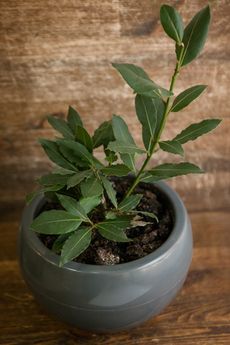 Bay Tree Propagation – Tips For Rooting Bay Tree Cuttings
Bay Tree Propagation – Tips For Rooting Bay Tree CuttingsOne mature bay tree will keep even the most dedicated cook in pungent bay leaves for a lifetime. But if you need more, it is not difficult to start growing a bay tree from cuttings. For more information on propagating cuttings from a bay tree, click here.
By Teo Spengler
-
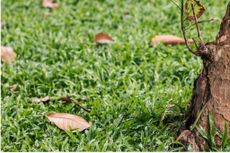 Bay Tree Leaf Drop: Why Is My Bay Losing Leaves
Bay Tree Leaf Drop: Why Is My Bay Losing LeavesBay laurel is one of the most impressive looking among the culinary herbs. Although it?s pretty sturdy, once in a while you may run into trouble with dropping bay leaves. Click this article to learn about bay trees dropping leaves.
By Kristi Waterworth
-
 How To Treat Bay Pests : Dealing With Pests On A Bay Tree
How To Treat Bay Pests : Dealing With Pests On A Bay TreeMost bay tree insects are foliar feasters, but there are a few boring insects that can cause damage to the trunk and twigs. Click on the following article to find out how to treat bay pests in a safe and non-toxic manner.
By Bonnie L. Grant
-
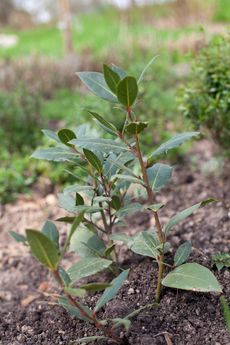 Diseases Of Bay Trees : How To Treat A Sick Bay Tree
Diseases Of Bay Trees : How To Treat A Sick Bay TreeBay is an easy-to-grow plant but is susceptible to a few diseases, many of which create problems on foliage, the part used in cooking. Preventing these diseases can help protect both the plant and your secret recipe ingredient. Learn more in this article.
By Bonnie L. Grant
-
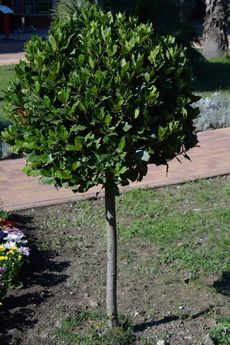 Bay Tree Transplant Tips: How To Transplant Bay Trees
Bay Tree Transplant Tips: How To Transplant Bay TreesBay laurel trees are small evergreens with dense, aromatic foliage. The leaves are often used for flavoring in cooking. If your bay tree has outgrown its planting site, you may be wondering how to transplant bay trees. Click here for information that can help.
By Teo Spengler
-
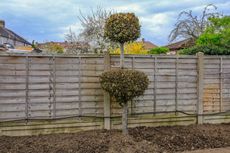 How To Prune A Bay Tree – Tips For Cutting Back Bay Trees
How To Prune A Bay Tree – Tips For Cutting Back Bay TreesBay tree pruning is not strictly necessary for the health of the tree, but the trees readily accept light or severe pruning, including pruning bay trees into topiary shapes. Learn how to prune bay laurel trees in this article.
By Teo Spengler
-
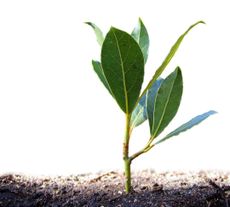 When To Sow Bay Seeds: Tips For Growing Bay Tree Seeds
When To Sow Bay Seeds: Tips For Growing Bay Tree SeedsUsually, sweet bay is purchased as a seedling from a nursery, but growing bay tree seeds is also possible, provided the grower has some patience since bay seed germination is a slow process. Interested in planting bay seeds? Find out when to sow bay seeds in this article.
By Amy Grant
-
 Harvesting Bay Leaves: When To Pick Bay Leaves For Cooking
Harvesting Bay Leaves: When To Pick Bay Leaves For CookingAlmost everyone should be picking their own bay leaves; of course, you need to know when to pick them. Is there a specific bay leaf harvest time of year? The following article contains information on harvesting bay leaves.
By Amy Grant